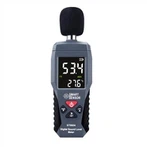Fluorescentie microscoop principe toepassing en gebruik
(1) The principle and structural characteristics of the fluorescence microscope: the fluorescence microscope uses a point light source with high luminous efficiency to emit light of a certain wavelength (such as ultraviolet light 3650 in or purple blue light 4200 in) through the filter system as the excitation light to excite the specimen. After the fluorescent substance inside emits fluorescence of various colors, it is observed through the magnification of the objective lens and eyepiece. In this way, under a strong contrast background, even if the fluorescence is very weak, it is easy to identify and has high sensitivity. It is mainly used for the research of cell structure and function and chemical composition. The basic structure of a fluorescence microscope is composed of an ordinary optical microscope plus some accessories (such as a fluorescent light source, an excitation filter, a two-color beam splitter and a blocking filter, etc.). Fluorescent light source - generally use ultra-high pressure mercury lamp (50-200W), which can emit light of various wavelengths, but each fluorescent substance has an excitation wavelength that produces the strongest fluorescence, so an excitation filter ( Generally, there are ultraviolet, purple, blue and green excitation filters), which only allow excitation light of a certain wavelength to pass through and irradiate the specimen, while absorbing other light. After each substance is irradiated by excitation light, it emits visible fluorescence with a longer wavelength than the irradiation wavelength in a very short time. Fluorescence is specific and generally weaker than excitation light. In order to observe specific fluorescence, a blocking (or suppressing) filter is required behind the objective lens. It has two functions: one is to absorb and block the excitation light from entering the eyepiece, so as not to disturb the fluorescence and damage the eyes; the other is to select and let the specific fluorescence pass through, showing a specific fluorescent color. The two filters must be used together.
1. Transmissie fluorescentie microscoop: De excitatie licht bron is door het specimen materiaal door a condensor lens aan excite fluorescentie. A donker veld collector is vaak gebruikt, en an gewoon collector kan ook be gebruikt naar aanpassen de spiegel zo dat de excitatie licht is omgeleid en omgeleid naar het specimen. Dit is een ouder fluorescent microscoop. De voordeel is dat de fluorescentie is sterk bij laag vergroting, maar het nadeel is dat de fluorescentie afneemt met de toename van vergroting. Daarom, it is beter om waarneem groter specimen materialen.
2. Epi-fluorescence microscope is a new type of fluorescence microscope developed in modern times. The difference is that the excitation light falls from the objective lens to the surface of the specimen, that is, the same objective lens is used as the illumination condenser and the objective lens for collecting fluorescence. A dichroic beam splitter needs to be added in the light path, which is 45 degree away from the light uranium. The excitation light is reflected into the objective lens and collected on the sample. The fluorescence generated by the sample and the excitation light reflected by the lens surface of the objective lens and the cover glass surface enter the objective lens at the same time, and return to the two-color beam splitter to make the excitation light Separated from fluorescence, residual excitation light is absorbed by blocking filters. Such as changing to a combination of different excitation filter/two-color beam splitter/blocking filter, it can meet the needs of different fluorescent reaction products. The advantage of this kind of fluorescence microscope is that the illumination of the field of view is uniform, the imaging is clear, and the greater the magnification, the stronger the fluorescence.
(2) How to use de fluorescentie microscoop.
1. Turn on the light source, and the ultra-high pressure mercury lamp needs to warm up for a few minutes to reach the brightest point.
2. The transmission fluorescence microscope needs to install the required excitation filter between the light source and the condenser, and install the corresponding blocking filter behind the objective lens. Epi-fluorescence microscopes need to insert the required excitation filter/dual-color beam splitter/blocking filter inserts into the slots in the light path.
3. Observe with a low-magnifinification lens, and adjust the center of the light source so that it is located in the center of the entire illumination spot volgens aan the aanpassing device of different models of fluorescentie microscopen.
4. Plaats het specimen stuk en observeren na scherpstellen. Aandacht moet behoor betaald tijdens gebruik: do not observe direct met het einde filter, so as niet aan oorzaak oog schade; wanneer waarnemen specimens met an olie lens, a speciaal olie lens zonder fluorescentie moeten be gebruikt; na de hogedruk kwik lamp is gedraaid uit, it kanniet worden aan aan onmiddellijk, it moet worden worden getest. Het kan be opnieuw opgestart na 5 minuten, anders het zal be onstabiel en affect het leven van het kwik lampje lamp.
(3) Observe the cells stained with 0.01 percent acridine orange fluorescent dye under the fluorescent microscope on the teaching platform with a blue-violet light filter. The nucleus and cytoplasma are excited to produce two different colors of fluorescence (dark green and orange-red).






